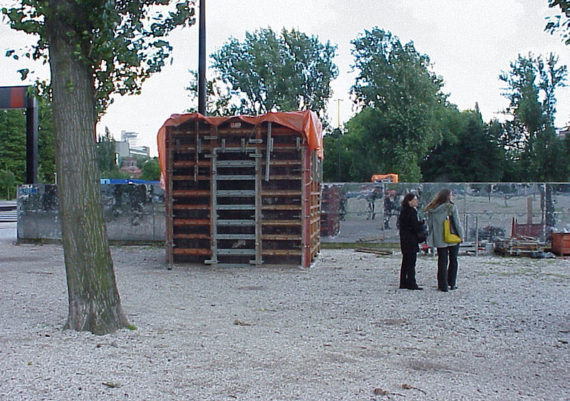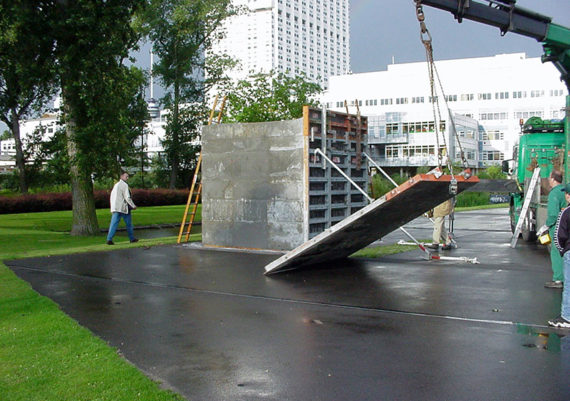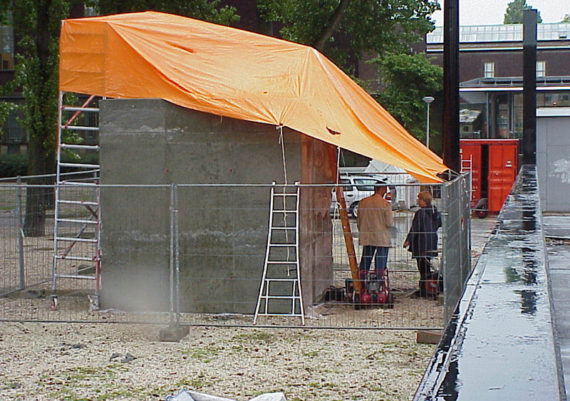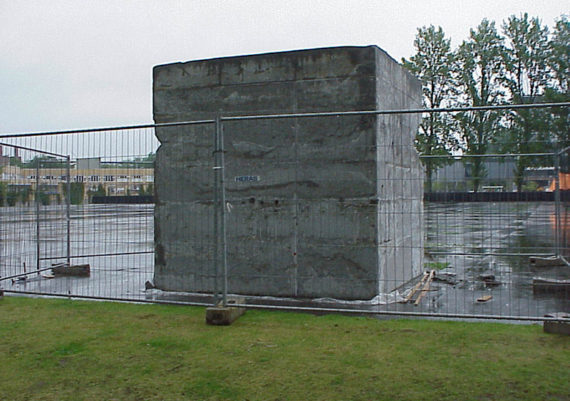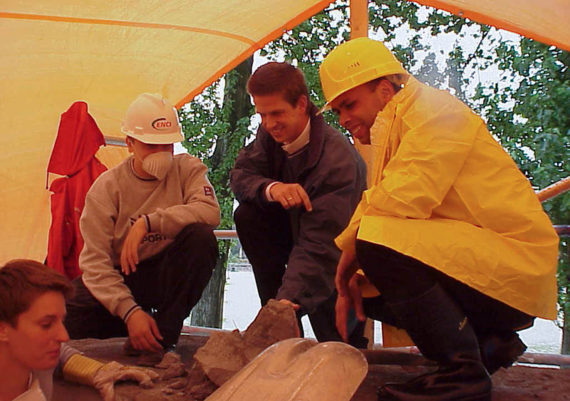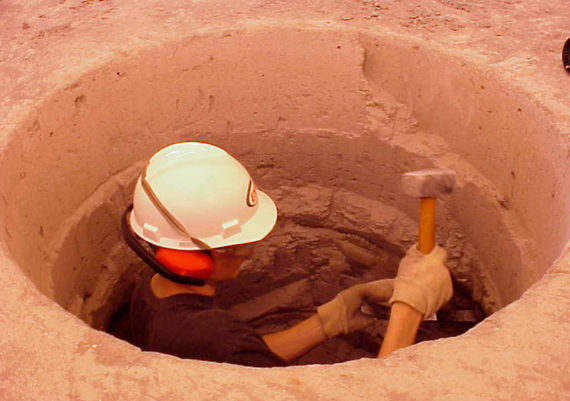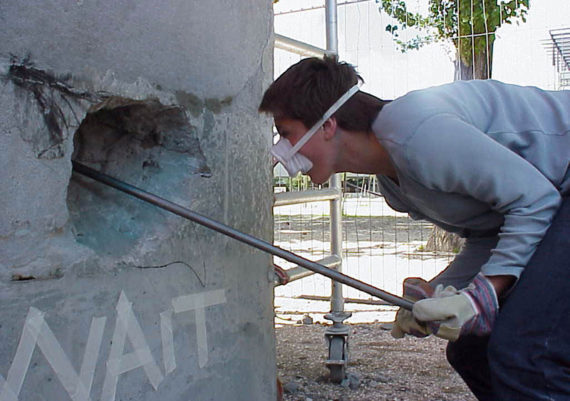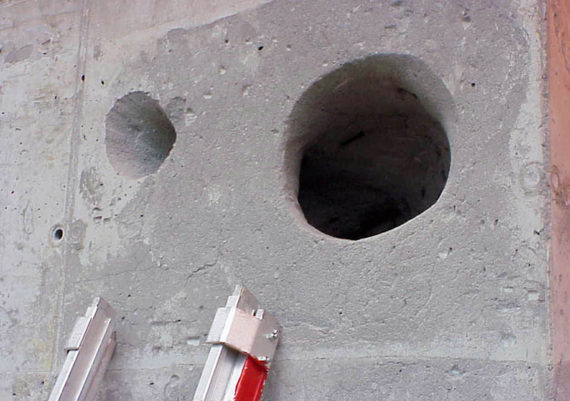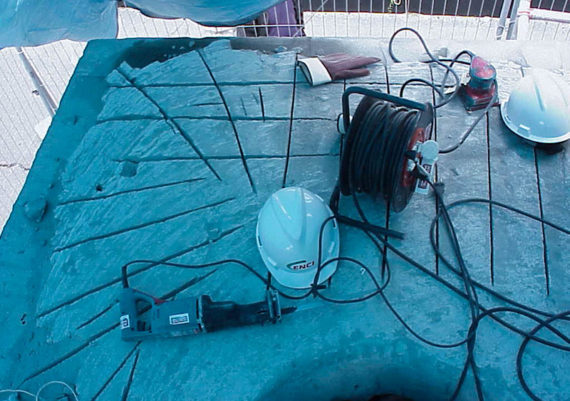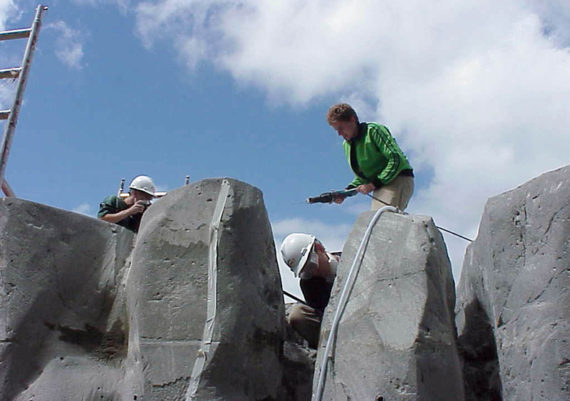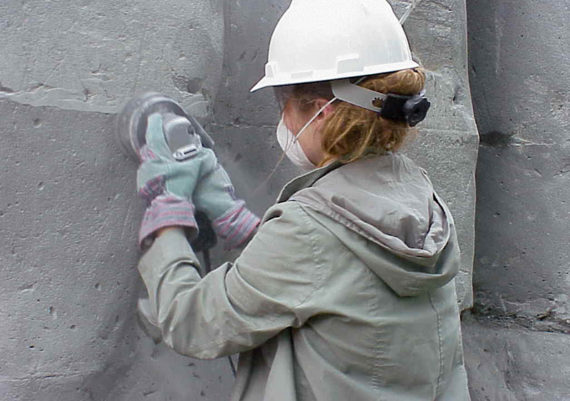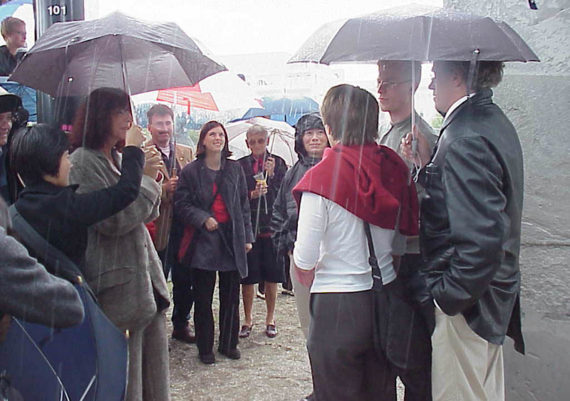Blitz Beton Workshop 2000 - Atmospherics
This workshop intends to investigate the so-called ‘ atmospherics in architecture’. And it is a Blitz Beton Workshop. An interesting combination of fundamental architectural research that has to be executed in scale one to one as architectural objects. In other words: the most direct way to verify assumptions that arise from theory and fascinations.
2000
consultancy, coordination & management, tutoring, publication
Atmospherics
Documenting the Blitz Beton Workshop Atmospherics, led by Jun Aoki. Roterdam, August 2000.
film & editing
Erik Jutten
English / Dutch
a sense of weight
This workshop intends to investigate the so-called ‘ atmospherics in architecture’. And it is a Blitz Beton Workshop. An interesting combination of fundamental architectural research that has to be executed in scale one to one as architectural objects. In other words: the most direct way to verify assumptions that arise from theory and fascinations. And that is exactly the way this workshop will work. Jun Aoki’s introduction of the theme ‘atmospherics’ guaranties an intense exploration of our knowledge of, and assumptions about the basics of architecture. The fact that we really have to build the proposals gives us the necessary boundaries to avoid an endless series of discourse. If only because of the limited amount of time, or the limitations of materials we can use – only one, and that is foamed concrete – with its specific ways to work with it.
But first we will freely discuss our notions on atmospherics. Notions, in plural, because it seems that since the introduction of this word by Jun Aoki it has already been used in many different ways. Leading to quit different understandings. And although the term incorporates a large number of possible interpretations and even more ways to put these to use, it seems necessary to begin by defining our starting point. Trying to clear some, in my view, misunderstandings.
Atmospherics is not the same as atmosphere, although obviously the two are somehow connected. Also, atmospherics is not an adjective, thus one can not speak of an ‘atmospherics space’. You might even have your doubts talking about spaces with atmospherics qualities.
So what is atmospherics? According to the dictionary it is electromagnetic disturbances that are produced in radio receiving apparatus. Something similar to static. Defined like this it is an amazing phenomenon that makes it possible to experience a condition – in this case silence - that normally cannot be sensed. Or differently put: creating awareness of a situation by means of a normally undetectable ‘component’. This component works like a catalyst.
Thus, atmospherics is a phenomenon. It is not the quality of a condition that cannot be sensed, and it definitely is not the catalyst itself. If we want to transfer the physics notion of atmospherics to other disciplines in such a way that we can use it, the phenomenon will translate into a technique. A technique that belongs to a specific strategy. In our case a strategy that aims to enhance an existing or inherent, but undervalued or unnoticed, quality of a site or building. Or perhaps even the addition of a totally new quality to the existing condition.
In physics and chemistry this phenomenon can be triggered by means of a catalyst. This would be the most extreme tool to use. Extreme in the sense that a catalyst, by definition, stays unaltered while its surroundings are influenced. Although the idea of an architectonical catalyst is extremely appealing, it seems impossible for our discipline to seriously consider the idea that parts of a space are not influencing the other parts. In our profession, the designated catalyst will never stay unaltered.
Precisely this quality of unavoidable interaction leads to the possible tools for atmospherics in architecture. It is easy to imagine that placing a certain object in a certain environment will have a certain effect on both the object and its environment. That has been done for years, if not forever. The Greeks had a refined theory about where and how to build their temples in such a way that not only their Gods would be pleased, but that the effect on their citizens and their enemies would be as impressive as possible. One can even argue that the roots of architecture deal with this phenomenon. Architecture orders space. It deals with front and back, up and down, in and out. But it also deals with here and there. Or, in other words, with the designed objects and their effects on its surroundings.
However, the idea of atmospherics goes beyond the obvious effects of architecture. It introduces an awareness of hidden qualities in both existing and new to be created situations. An awareness of qualities that were beyond the scope of the original designers, or beyond their original intentions. The fact that these submerged qualities can be activated by means of a seemingly limited addition only adds to the influence and potency of atmospherics.
How can a limited alteration or addition have an impressive impact? You can think in terms of irritation, annoyance, denial, and frustration. But also exaggeration or cultivation. The smallest changes can have tremendous effects. To consciously control these effects you should be aware of the way these influences work. First of all you should be aware of how you perceive them. How you perceive the situation in which you have to work and how your implementation will be perceived. None of the available senses should be overseen. It is obvious that you can see a location and that in its use you can feel it. To hear and smell a location is understandable, but can you also actually taste it?
How does architecture work? How do we perceive it? How many layers of perception are there? Do they all have to work on a conscious level? Do they all work towards the same goal? Do they all work from the same distance? Do they all work a strongly as the others?
Is taste really the most intimate and impressive sense we posses? Or can memories of certain smells work as addictive? Is sight only for large distances and touch for arms length? And is hearing our second most important faculty?
Teun Castelein, Susan Draeger, Elisabeth A.P. Eriksen, Monique Gorisse, Marvin Halden, Saskia Hermanek, Robin Hoenderdos, Christina Holona, Jiri van Hoof, Erik Jutten, Ron Kleinsman, Jasper Klinkhamer, Thorsten Lang, Marten Leringe, Antonio Lloveras, Roos Noevers, Kostantinos Pantazis, Marianne Rentzou, Jenny Rheinländer, Max Rink, Sander van Schaik, A. Yagnur Topeakli, Hannes Schwertfeger, Alex Tauber
supervisor
Jun Aoki
tutors
Siebe Bakker, Olv Klijn, Yushi Uehara
support
Boris Borowski, Hans Köhne, Billy Nolan, Mayumi Watanabe, John Wuisman
host
Netherlands Architecture Institute (NAi), Rotterdam - Kristin Feireiss
initiative
ENCI - Hans Köhne
